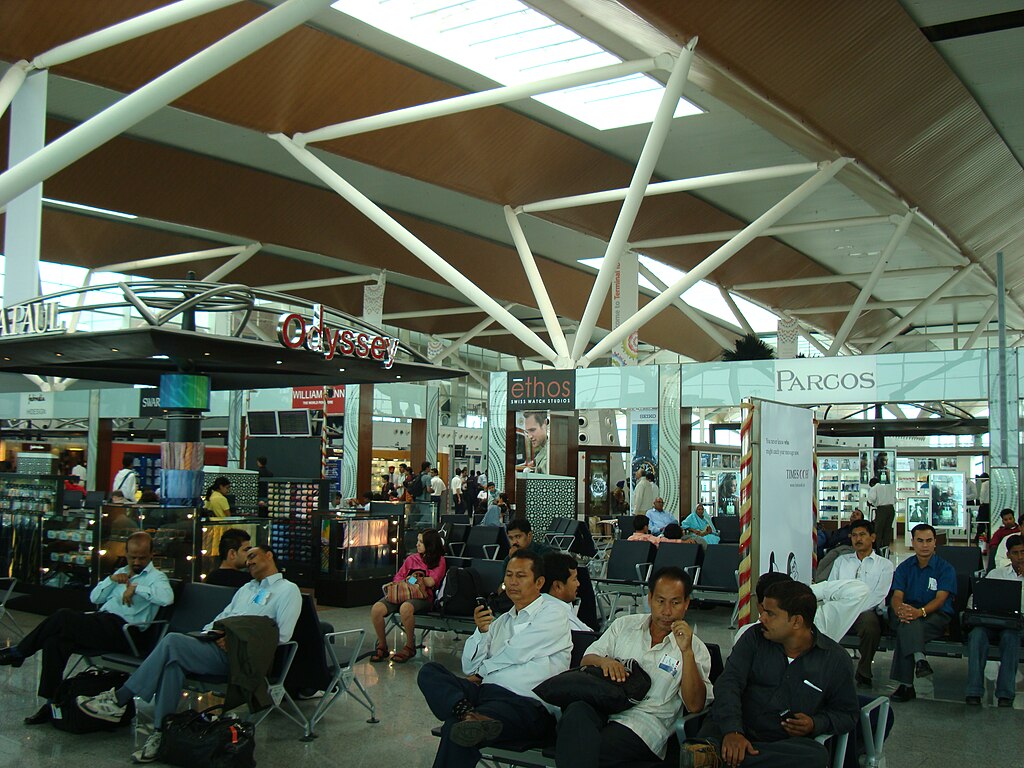
Advertising space within high-traffic areas like this waiting lounge provides a lucrative income source for Delhi Airport.
Photo: Bright-210 | Wikimedia CommonsInitially, it was estimated that construction of Navi Mumbai International Airport would be around $2 billion but by 2021, the cost had risen by $1 billion. Similarly, the cost of building Jewar Airport in Noida has been estimated to be over $3.6 billion. Such exorbitant costs come about because construction of an aerodrome factors in location, size, facilities, infrastructure, and land acquisition costs.
The construction of what was later to be the emptiest airport in the world – Mallata Rajapaksha Airport – was around $200m. Even in the small landlocked country like Nepal, an audacious project called Nijgadh International Airport, which had the construction been complete would have been the third largest airport in the world, was $.5 billion. Had the Mingbo Airport been constructed, it would have been the most dangerous airport in the world, and the one of the cheapest too, as the construction cost merely $900.
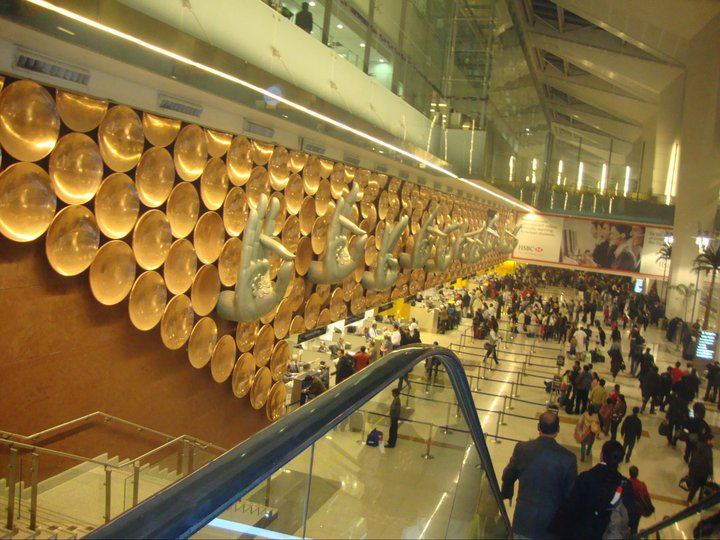
Photo:Vibhor97|Wikimedia commons
But the busiest airports in the world have more than tens of millions of passengers flying through them. And these necessitate world-class facilities. Also, there would be steps taken to reduce the instances of bird strikes, getting the carbon footprint down, among others.
Such technology demands huge investments, making it difficult for private players to fund airports entirely. That’s why, in India, airports are primarily built by the government. However, in some cases, the government introduces Public-Private Partnerships (PPP Model), where a private company collaborates with the government to develop the airport. Under this model, the government retains ownership, while private companies handle operations to facilitate modernization, reports the Department of Economic Affairs in India:
“Public Private Partnership (PPP) means an arrangement between a Government / statutory entity / Government owned entity on one side and a private sector entity on the other, for the provision of public assets and/or public services, through investments being made and/or management being undertaken by the private sector entity, for a specified period of time, where there is well defined allocation of risk between the private sector and the public entity and the private entity who is chosen on the basis of open competitive bidding, receives performance linked payments that conform (or are benchmarked) to specified and pre-determined performance standards, measurable by the public entity or its representative.”
New Delhi’s Indira Gandhi International Airport (DEL), which is one of the busiest airports for March 2025, and handles 67 million passengers each year, is owned by the government but operated by “Delhi International Airport Limited.”
Apart from the costs related to building an airport, running an airport also requires significant investment as expenses would include:
- Air Traffic Control Operations
- Airport infrastructure
- Employee salaries
- Runway maintenance and repair
- Utility bills like water, electricity, and gas
- Security, safety provisions, and adherence to environmental regulations
- Marketing, administration, and management
All airports in India operate under the Airport Authority of India (AAI), a government organization to which airports must pay fees. AAI also manages air traffic control, communications, and navigation services. Even airports built under the PPP Model must share revenue with AAI.

Photo: kawanet | Wikimedia Commons
Assessing the Airport Operating Costs in New Delhi Airport
The exact expenditures of the private airport operator are not always publicly available, but people have tried to estimate costs based on revenue and profit figures:
- In 2020, DEL had a profit of ₹13.1 crore. It also generated ₹4,243.62 crore in revenue. We can, therefore, estimate the total annual expenses to be approximately ₹4,230.5 crore.
- Each year, approximately 3.5 crore (37.14 million) passengers pass through Delhi Airport. Based on these figures, the airport spends an estimated ₹2,000 per passenger*.
*Please note that this is an approximation, as factors like loans and interest payments can slightly affect the data.
Given the exorbitant investments required—both in construction and ongoing operations—airports need to recover costs and generate profits. Let’s explore how they do that.
Getting to the crux of how airports make money?
Airports generate revenue in two primary ways:
Aviation-related revenues of an airport
The fact that around 19 lakh (1.9 million) people traveled abroad from India in 1991 and by the year prior to Covid-19,this number had grown to over 2.5 crore (25 million) annually, shows the massive aviation boom in India.
All airlines operating in and out of an airport need to pay a fee – something that is to your ticket price. These fee would include:
- Landing charges based on the weight of the aircraft
- Parking fee, which depends upon how much time the aircraft has spent on the ground in an airport. [Additional charges for any airplane parked overnight in an airport]. Parking fee depends on the airport’s location, aircraft size, and how long it was at the airport.
- Passenger service fee per passenger [includes the airport security fee, terminal service fee, and fees for passenger facilities. Apart from user development fees, fuel surcharges are also applicable.]
To better understand, let’s take an example. If an Air India Boeing 787 Dreamliner on a domestic lands at Delhi Airport, how much would it be charged? A Boeing 787 Dreamliner (which is deployed on the longest non-stop flights in the world, as well as the longest one-stop flights in the world) has a seating capacity of 250 and weighs 115 metric tons. Let us breakdown the charges on this aircraft:
- Landing charges Rs. 1,32,000 [landing charge per metric ton of an aircraft is Rs. 599.52]
- Parking fees: Rs. 2,500
- Aerobridge [ to provide a path for passengers to enter the plane] charge Rs. 3,080.
- Passenger Charge: Rs. 1,35,500 [Rs. 550 per passenger on this aircraft that has a 250 x 550**(irrespective of whether the seats are sold out or not)]
- User development fees: Rs. 100 to Rs. 400
- Aviation Security Fee: Rs. 200 per passenger
- Sporadically, some other type of fees are also introduced. For example, DEL introduced “Fuel Throughput Charges,” of Rs. 65.98 per ticket in 2021.
** The figure is rounded off to 250.
Aerolopa reports that the configuration of Air India’s 787-8 as the following:
- Business Class: Eighteen Zodiac Aura Lite seats arranged in a 2-2-2 configuration, which convert to a 6′-4″ lie-flat bed.
- Economy Class: 238 Safran Z300 seats arranged in a 3-3-3 configuration across three cabins
Estimates have it that half of the amount an airport spends per passenger is recovered through these charges. Also, the charges for the passengers are the same – irrespective of whether they are economy flyers or are traveling in business class.
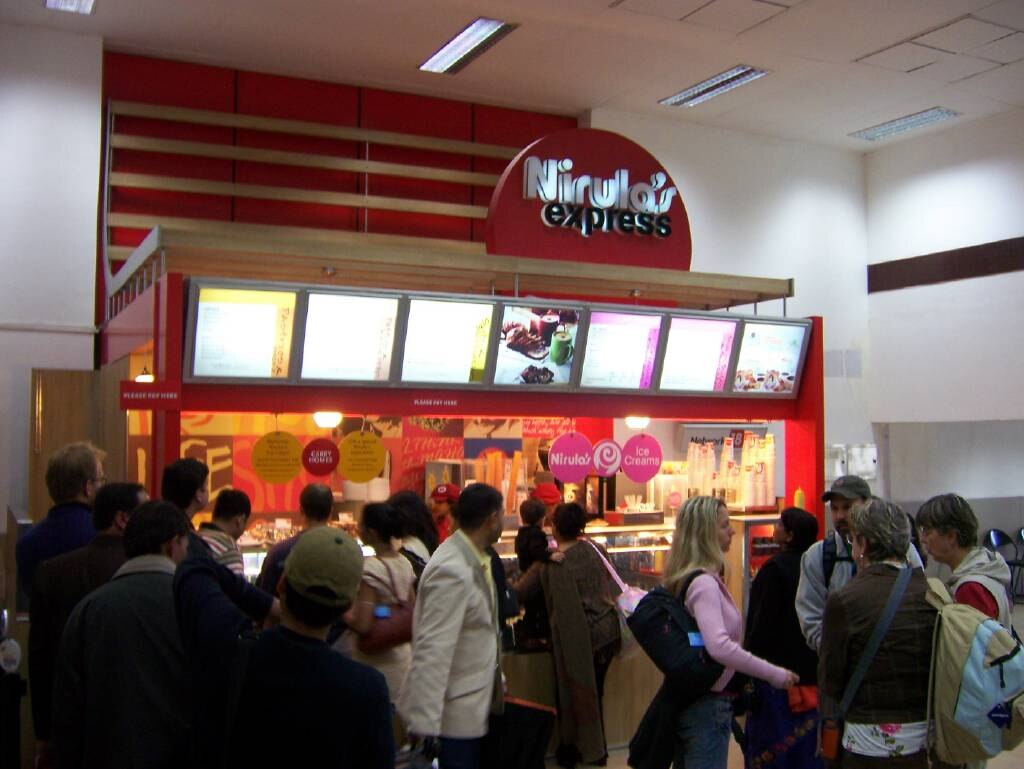
Photo: V Malik | Wikimedia commons
Airport’s revenues that are not directly related to aviation
There are ways that airports earn that don’t directly involve flying. These would include:
- Parking charges for cars, taxis, auto-rickshaws, shuttle services, or buses you take to and from the airport. (Parking a four-wheeler per hour costs Rs. 170, with each additional hour costing Rs. 100)The pickup and drop-off zones have access charges even for public transport. 20-30% of an airport’s revenue that are not directly related to flying come from parking fees alone.
- Airports taking percentage of sales of Retail shops, restaurants, food outlets, bookstores, and alcohol shops inside the airport.
- Airports charge cab aggregators like Uber Rs. 150 per ride as a surcharge
Some other avenues of an airport’s revenue include the following
Revenue from Property and Real Estate
Airports strategically acquire and lease land around the airport, ensuring that hotels, businesses, and logistics companies pay premium rental fees. The closer a business is to the airport, the more valuable its location, and airports capitalize on this demand.
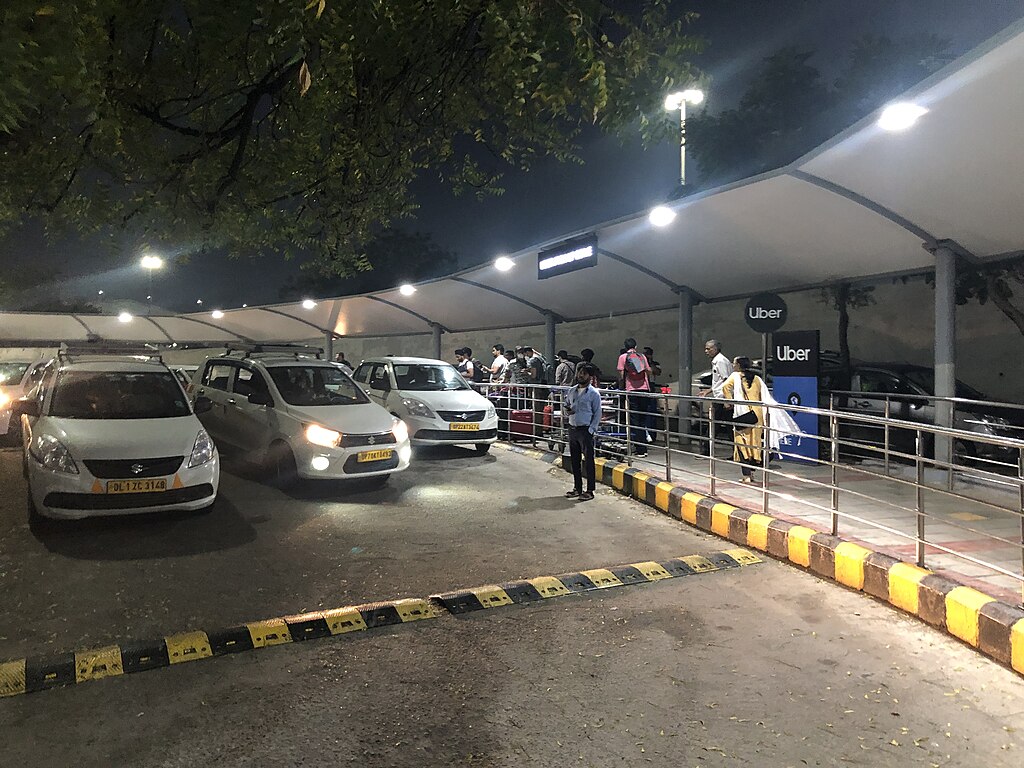
Photo: Davide Mauro | wikimedia commons
Advertising Revenue
Before even entering the airport, passengers encounter numerous advertisements, from billboards to digital screens. Airports charge brands a high price for these advertising spaces due to the premium audience—air travelers generally have a higher spending capacity than the average consumer. This makes airport advertising one of the most expensive in the industry.
Advertising isn’t limited to outside the terminal; it extends inside as well. Both departure and arrival areas are filled with digital and print ads, ensuring that brands capture maximum attention from travelers.
The Retail and Dining Experience
Airports are designed to encourage spending. An airport feels more like a high-end shopping mall, but one where entry is restricted to paying customers i.e., ticket holders. The moment you step in an airport, the prices price of a water bottle which is available outside the airport for Rs 20 shoots up five times a simple meal can cost thousands of rupees.
The longer a passenger stays at the airport, the more money they are likely to spend. The walk to the boarding gate is deliberately routed through retail stores, restaurants, and duty-free shops, increasing impulse purchases.
Time Management and Passenger Behavior
Uncertainty about airport congestion forces passengers to arrive early. Whether it’s a domestic flight requiring arrival 2-3 hours in advance or an international flight needing even more time, passengers end up spending extra time at the airport. While airports could introduce automation to speed up baggage handling and security, the existing system benefits them financially by keeping passengers in retail-heavy zones longer.
Seating arrangements also play a role. The number of seats in public waiting areas is limited, encouraging passengers to sit in restaurants, cafes, or lounges—where they end up spending more money.
Retail and Dining Commissions
Restaurants, bars, and fast-food chains at Delhi Airport operate under revenue-sharing agreements with the airport authority. DEL takes 10-25% cut from the sales of restaurants, bars, and fast-food chains. In some cases, businesses pay a higher rental fee instead of sharing revenue. On average, passengers contribute Rs. 150-200 each to DEL through food and beverage purchases.
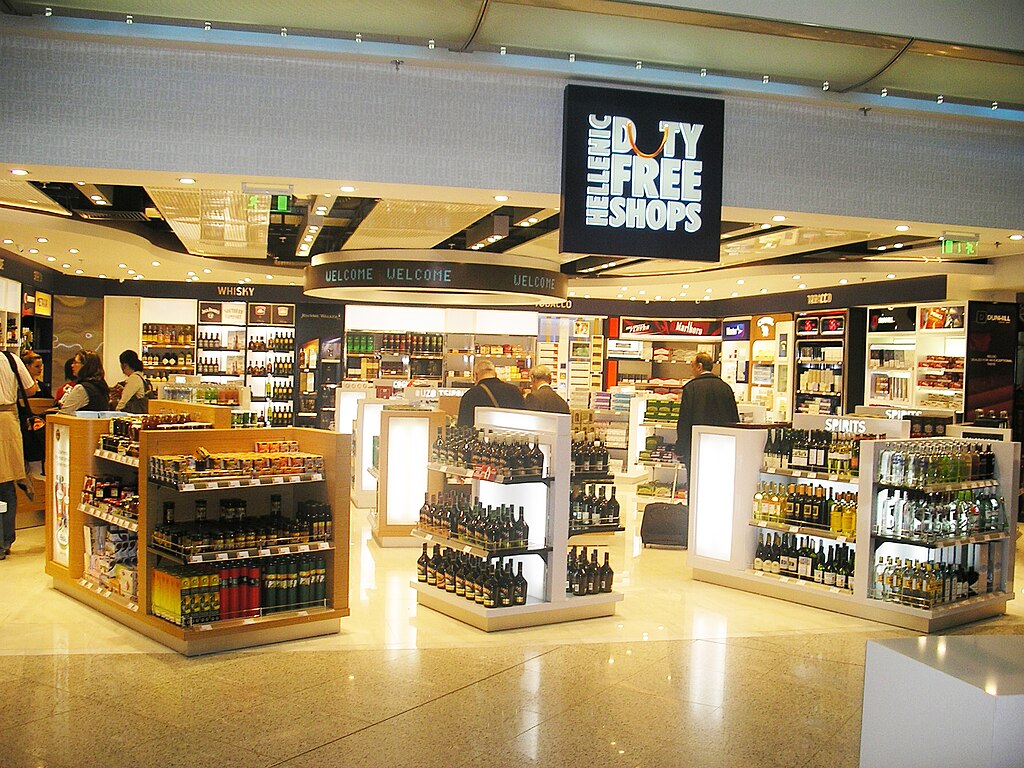
Photo: Vradwiki | Wikimedia Commons
Duty-Free Shops
Duty-free shops are a major revenue driver, but they are only available for international travelers. These shops offer tax-free products, making them attractive for passengers looking to save 20-30% compared to local retail stores.
The duty-free model was first introduced in 1947 at Shannon Airport, Ireland, and has since become a global standard. Despite the fact that there are purchase limits set by the Central Board of Excise and Customs (CBEC)—passengers can spend up to Rs. 25,000 at duty-free shops, with a maximum alcohol limit of 2 liters per passport, Airports earn heavily from these shops, as exemplified by the numbers below:
- Duty-free sales contribute 15-20% of total non-aeronautical revenue in Indian Airports.
- Around 75-80% of this revenue comes from alcohol and cigarette sales

Photo: Ian S | Wikimedia Commons
Airport Lounge Access and Credit Card Partnerships
Lounges offer premium experiences, and passengers either pay directly (around Rs. 1,800 at Delhi Airport) or gain access through credit card perks. Credit card companies partner with lounge operators to offer free access to their customers. This benefits both parties—airports and lounges earn from the credit card companies, while banks use these perks to attract high-spending customers. Card companies also charge higher annual fees for premium cards with lounge access.
Conclusion
While it is true that disruptions like the COVID-19 can lead to losses and that there are high costs of building and maintaining an airport, these rarely operate at losses. An exception to this rule of thumb would be the nation of Nepal, where there are a large number of unused airports. Even its international airports such as Pokhara International Airport sees almost no international travelers, and has been touted as China’s debt trap.
Delhi Airport, on the other hand, is a splendid example of how sumptuous and profitable an airport can be. And its ways of earning can be a lot more subtle than one might imagine on the surface.
